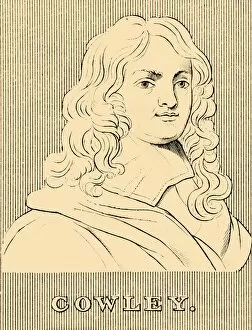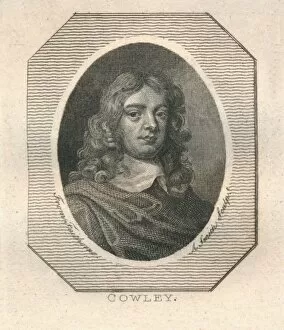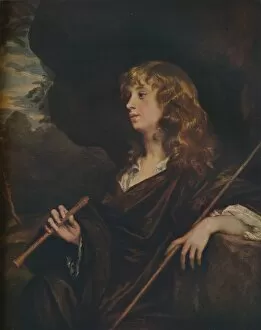Abraham Cowley Collection
Abraham Cowley, a renowned English poet of the 17th century, is immortalized through various engravings and photographs that capture different aspects of his life
All Professionally Made to Order for Quick Shipping
Abraham Cowley, a renowned English poet of the 17th century, is immortalized through various engravings and photographs that capture different aspects of his life. One such engraving showcases Abraham Cowley's residence in Chertsey, a place where he found solace and inspiration for his literary works. Another engraving titled "A Lovers Chronicle" hints at the romantic themes explored by Cowley in his poetry. In one litho artwork entitled "And, since love ne er will from me flee, a mistress moderately fair, " we catch a glimpse of Cowley's fascination with love and beauty. The image portrays an enchanting mistress who captivates the poet's heart. Furthermore, an engraving depicts another view of Abraham Cowleys' house in Chertsey, Surrey—a place that witnessed the birth of many poetic masterpieces. Interestingly, there is even an engraving showcasing a chair made from wood salvaged from Sir Francis Drake's ship—an intriguing connection to maritime history within Cowley's surroundings. This highlights how diverse influences shaped his creative process. Moving beyond physical locations associated with him, Poets Corner at Westminster Abbey holds an engraved tribute to this esteemed wordsmith—showcasing his impact on English literature as he rests among other great poets. Various engravings depict Abraham Cowley himself; they provide glimpses into his appearance and personality. From Mr. Abraham Cowley to simply "Abraham Cowley, " these images serve as visual representations of the man behind the verses. Lastly, an enamel portrait captures not only his likeness but also reflects upon the enduring legacy left by this talented poet whose influence continues to inspire generations today. Cowley lived between 1618-1667; however, it was not until 1830 that an unknown creator produced yet another depiction honoring him—signifying how time has preserved and celebrated this remarkable figure throughout centuries.














